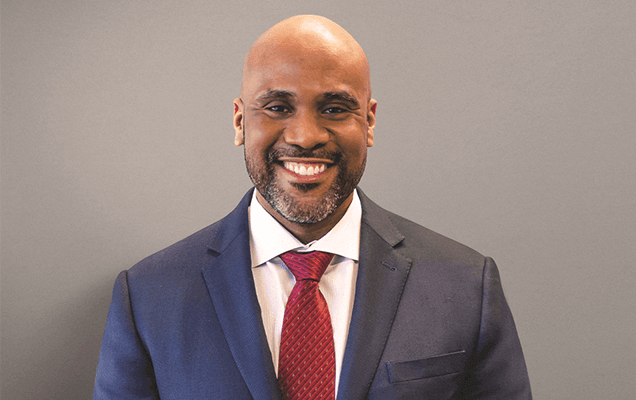Every year, approximately 300,000 people in the U.S. are diagnosed with a Chiari malformation—a structural defect that involves the position of the cerebellum relative to the foramen magnum at the base of the skull. When symptoms interfere with daily life, surgery may be recommended to relieve pressure on the brain. Depending on your individual circumstances, recovery after Chiari malformation surgery can take several weeks and some symptoms may take up to a year to resolve.
Whether you have a procedure scheduled or are in the treatment-planning process, understanding what to expect after Chiari malformation surgery allows you to prepare and focus entirely on your recovery. The following will help you better understand your treatment options, as well as the recovery process itself.
Kinds of Chiari Malformation Surgeries
Chiari malformation surgeries can fall into one of two categories: traditional or minimally invasive. Traditional surgeries have long been used in chiari malformation treatment, but advances in technology have made minimally invasive techniques possible. These treatments typically result in less bleeding, pain and recovery time for patients. Many patients who are candidates for traditional Chiari malformation surgeries are also eligible for minimally invasive procedures, which are becoming the treatment option of choice for many surgeons.
Traditional Procedures
- Dural Opening Chiari Decompression: The surgeon removes a small section at the back of your skull, as well as the dura (a membrane covering the brain), a flexible patch is then sewn into the dura in order to create more space and alleviate pressure.
- Cervical Laminectomy: Often performed in conjunction with Chiari decompression surgery, the surgeon removes a small portion of your uppermost vertebrae, relieving pressure and/or impingement of your spinal cord.
- Spinal Fusion: If your condition requires extra stabilization of your spine, your surgeon can join your skull and uppermost vertebrae so they heal together, increasing stability and protecting your spinal cord.
- Transnasal/Transoral Chiari Decompression: Some patients have other bony malformations and require transnasal/transoral decompression (often in conjunction with other surgeries) in which the surgeon will access the malformation through a small incision in your nasal passages or mouth.
- CSF Diversion: If you have an accumulation of cerebrospinal fluid (CSF) within your skull and/or spinal canal, your surgeon can place a shunt that will divert the CSF to another area of the body, where it can be reabsorbed through the body’s natural processes.
Minimally Invasive Procedures
- Minimally Invasive Chiari Decompression: This procedure is similar to traditional Chiari decompression surgery, but requires a smaller incision, doesn’t require a patch and typically involves a shorter recovery period.
- Non Dural Opening Posterior Fossa Decompression: In this procedure, the surgeon uses microscopic visualization and specialized tools to make a small incision at the back of your head. The doctor then shaves down the bone within the posterior fossa, which increases space for your cerebellum and relieves symptoms.
Right After Your Chiari Surgery
Chiari malformation surgery typically takes two to three hours. Right after surgery, patients spend the first few hours in a recovery room or intensive care unit, where they can be monitored frequently for signs of complications or neurological problems that arise from trauma to the brain. You can expect to receive medications for pain, inflammation and swelling. Some of these medications can cause side effects, and your healthcare team will monitor you for any problems with these.
A hospital stay after Chiari malformation surgery can last from a few days to a week, depending on individual circumstances. Patients with special concerns such as ongoing health conditions or advanced age may have a longer stay to make sure no complications occur.
In the Days After Surgery
When you’re released from the hospital to recover at home, your activities will be limited for a few weeks, gradually increasing to normal levels as your recovery progresses. Limitations can include:
- No bending over
- No lifting or straining
- No long episodes of coughing
- No housework or yard work
- No alcoholic beverages
- No driving until your surgeon approves
You can expect to experience pain and discomfort, especially when turning or lifting your head, so you’ll be prescribed medications for pain and muscle spasms.
After Chiari malformation surgery, fatigue and weakness, and headaches are common. It is important during this time to watch for signs of infection, such as redness, inflammation, fever or fluid accumulating or leaking around the incision. Call your doctor if you have worsening headaches, severe neck pain when you bend your head forward, increased drowsiness, or weakness in the arms or legs.
In the days after surgery, you’ll also see your doctors for follow-up visits to monitor your recovery and remove stitches and staples. If you take medications for other health conditions, your doctors may modify your doses while you recover.
In the Weeks After Surgery
In the weeks following surgery, you can gradually return to normal activities, but you may be advised to avoid strenuous exercise. Walking can help with circulation and muscle tone while you recover.
Surgery for Chiari malformation involves dissection of the muscles of the neck, so neck pain and stiffness are common problems during the recovery period. Your doctor may recommend isometric neck exercises and gentle stretching to strengthen these muscles and reduce stiffness. In some cases, physical therapy might be added to the recovery plan.
After surgery, many of the symptoms of a Chiari malformation may improve, including headache, swallowing, facial pain or dizziness. But some symptoms, especially those involving memory, muscle weakness or other spinal cord issues, can take longer to resolve, and may not return to normal functioning.
During the weeks of your recovery, you can expect to see your doctor for follow-ups that can include MRI or CT imaging to monitor your progress. Patients can usually go back to work six to twelve weeks after surgery if no complications occur.
It's time to get back
to doing what you love.
Lifestyle Management After Chiari Malformation Surgery
Your recovery is going to be a process, requiring adjustments and patience along the way. Remember that you are not in this alone and that your doctor is there to provide you with advice and support during this time.
Although many people return to work after approximately six weeks, symptoms can take up to a year to resolve fully and some patients may continue to experience symptoms that have improved but not completely gone away. You may even require physical therapy to help strengthen muscles or improve balance or coordination.
Because the healing process takes time, don’t be discouraged if you don’t experience complete relief immediately. A positive outlook helps to relieve stress, which can be beneficial to the healing process. Establish a support network—either family, friends, or other Chiari malformation patients—who can help you along the way.
As you heal, rather than focusing on tasks you cannot do, keep thinking optimistically. Consider the reduction in symptoms that you’ve experienced, the activities you are capable of today versus in the weeks immediately after your surgery and focus on progress instead of roadblocks. This can help you focus on health and healing with confidence, improving your recovery process.
Over time, you should continue to check in with your doctor and follow any instructions you are given. As you recover, continue to be vigilant and stay on top of your health, even if you feel like all of your symptoms have resolved after Chiari malformation surgery.
Factors That Affect Outcomes
No two patients are alike, and many factors can affect the timeline and the outcome of your recovery. Age can play a role, and so can your overall health before surgery. Obesity, other health conditions such as diabetes or cardiovascular disease and lifestyle choices such as smoking, diet and exercise can also influence the course of your recovery from surgery.
Your neurosurgeons and health care team can work with you to develop a Chiari malformation surgery recovery plan that’s right for you and your unique circumstances. If at any point you have any questions or concerns, be sure to address them with your surgeon, who will do his or her best to ensure you are comfortable with your upcoming Chiari malformation treatment.

About Dr. Gaetan Moise
Dr. Gaetan Moise is an accomplished neurosurgeon in North Jersey and is a proud member of Neurosurgeons of New Jersey, practicing out of their Ridgewood office conveniently located on East Ridgewood Avenue. His compassionate evidence-based, results-driven approach is guided by his desire to help patients achieve happy, pain-free lives through non-surgical and appropriate surgical solutions. Dr. Moise’s techniques are influenced by the advancements in minimally invasive surgery technology as well as advances in the understanding of the intricacies of the nervous system, brain, and spinal cord. Dr. Moise is a member of The Congress of Neurological Surgeons and the American Association of Neurological Surgeons. He is accepting new patients.
Recent Posts:






